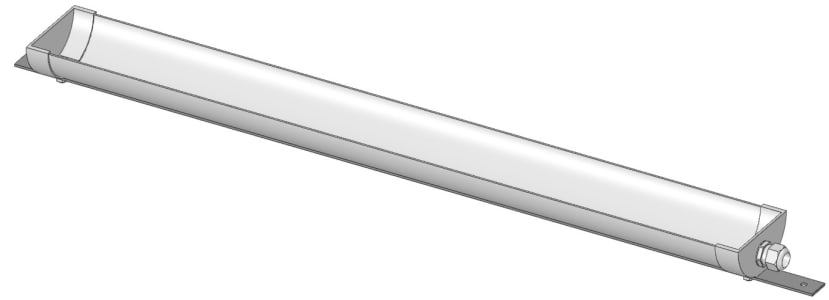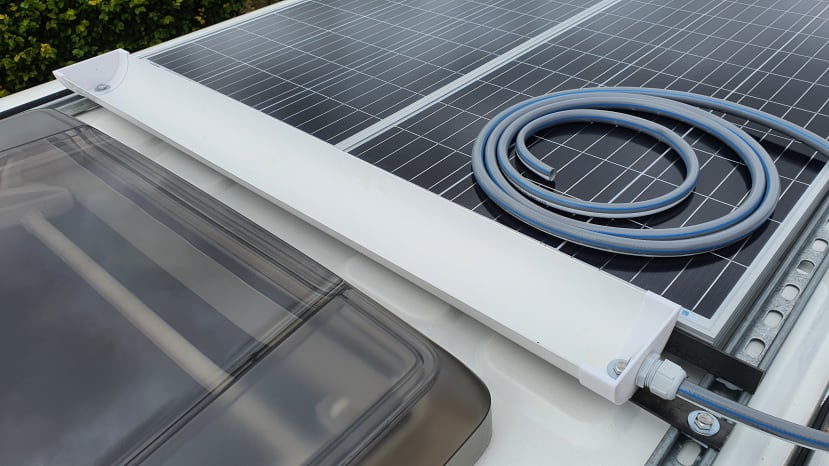Building a Rainwater Collector for an Off-Grid Campervan
Follow articleHow do you feel about this article? Help us to provide better content for you.
Thank you! Your feedback has been received.
There was a problem submitting your feedback, please try again later.
What do you think of this article?
The Intergovernmental Panel on Climate Change (IPCC) released their latest environmental report this month. It is the most important document that we will likely see this century that details the causes of climate change around the globe and represents the result of thousands of peer-reviewed scientific research papers under relentless cross-governmental scrutiny with an unequivocal consensus.
Although it is not surprising to hear that the root cause of global warming is the effect caused by the excessive burning of fossil fuels, the urgency of the report in the lead-up to the COP26 climate conference in Glasgow is concerning. In the past, I have written at length about the problems we face and the solutions we have in regard to climate change but I have since realised that progress is often very slow and simply talking about the problem does not equate to real action.
To this end, I have been developing my off-grid campervan project [working title] where I have written about solar, wind and transport in an effort to promote low-carbon lifestyles and technologies that we can take advantage of today. In light of the IPCC report, it only seems more urgent that we express a demand for these alternatives, not because individual responsibility is a solution to a systemic issue, but where the slow pace of sustainable infrastructure and government policy is now unacceptable.
In this article, I am keen to explore the feasibility of passive rainwater capture as part of my vision to create a smart and self-sufficient remote living environment using available low-carbon technology.
Parts List
- Half-round guttering
- 3D print filament
- M8 screws
- M8 penny washers
- M8 channel nuts
- Rubber hose pipe
- M25 cable gland
- Sikaflex 522
Building the Collector
Naturally clean water is hard to come by in the developed world due to the careless amount of pollution that has been allowed to contaminate the native waterways. This can often include industrial and agricultural runoff, sanitation overflow, chemicals, heavy metals and microplastics that are either toxic or encourage the growth of algae and bacteria. It is therefore desirable to avoid these groundwater pollutants by capturing it as rain before it is allowed to be contaminated.
There are some caveats in that rainwater is not inherently clean and can be influenced easily by local air contaminants like carbon, NOX and other particulates that can cause acid rain. However, areas of high concentration can be largely avoided in the context of a mobile living environment and we can remove these contaminants with filtering and processing at a later stage anyway.
Using DesignSpark Mechanical to model the assembly
For now, we will focus on the design of a rainwater collector for our off-grid campervan project that can top-up the onboard water tank where there is no access to a mains water supply. To do this, we will be using the same roof-rack system that was designed to hold the solar array in place and some off the shelf household guttering to collect the rainwater as it falls. It is also worth noting that each solar panel could be used as a clean runoff surface to transport water to the guttering for extra yield.
Using DesignSpark Mechanical we can design the roof-mounted gutter system around an off-cut of half-round plastic gutter profile that is roughly the width of the van roof. We can then model the end caps that will hold the water in the half-pipe and help deliver it to the water tank mounted underneath the van by using a watertight gland and a rubber pipe attached at one end.
3D-printed end-cap assembly with watertight gland
A piece of 30mm flat steel bar can be used to strengthen the structure for road use and double as a flat bracket that will squarely mount the round guttering to the roof rack. We can then use 3D printed clamps and metal fixings to secure the round gutter profile flush up against the flat bar. Finally, we can seal any gaps and holes in the gutter assembly using Sikaflex 522, a sealant that is designed specifically for motorhome applications.
Rainwater collector printed and assembled
Installation and Test
With the water collector assembly complete we are ready to install it on the campervan and test its performance as an off-grid water supply. We can mount the assembly to the van and secure it using two M8 screws, penny washers and channel nuts.
Finished assembly mounted on the roof rails next to the solar array
We can then attach the hose to the assembly using the locking gland and feed the other end into the inlet of the water tank whenever we need to top it up. While not in use, the hose can be stowed securely underneath the solar array or removed altogether and placed in the cab of the van.
Simulating rainwater with a hose
Filling the underslung water tank with the inlet
We can test the design by spraying the half-round pipe with another hose connected to the mains water supply that simulates the falling of rainwater. We should then be able to hear the water trickle down the water pipe and into the water tank. We can check if this works by opening the water dump valve underneath the van and seeing if any water comes out.
Rainwater collector bucket test
Alternatively, we can use a bucket to catch the water supplied from the collector in the interest of observing water flow and yield over time. It was exciting to see how quickly the bucket filled up, even when simulating a very low water flow, and rewarding to see the system working so well. Naturally, I am very keen to test the rainwater collector in real-world conditions, especially given the UK climate often features regular rainfall which is very conducive to off-grid water collection.
In the next article, we will explore the use of domestic water filters in the interest of removing any impurities that might contaminate our otherwise usable water and use our off-grid renewable power to pump it around a basic water supply system.









Comments